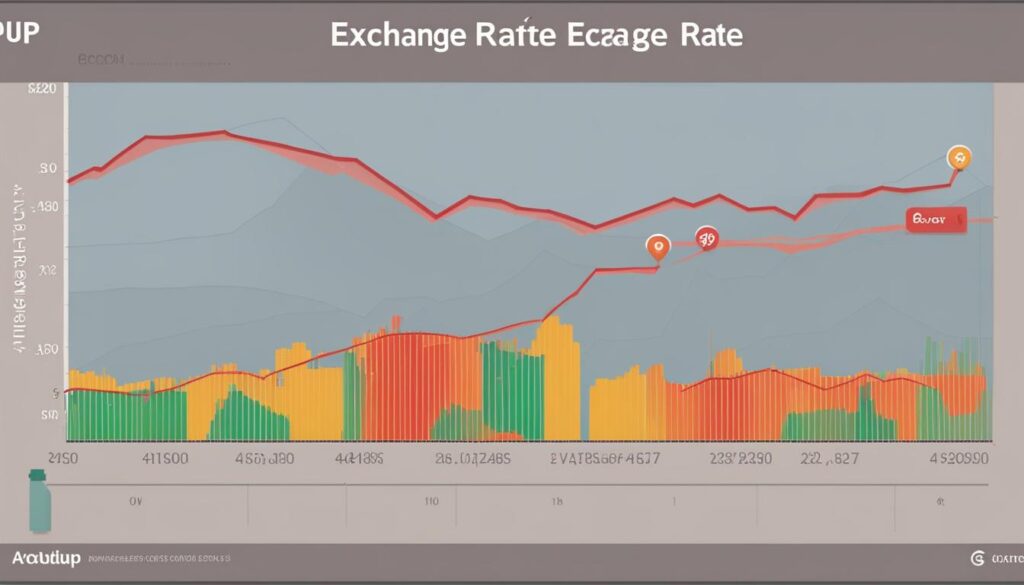Visualisation can be a powerful tool for self-improvement, allowing individuals to mentally practice and prepare for success. Studies have shown that mental practices, such as visualisation, can be almost as effective as physical practice in various areas, including sports, chess, and weightlifting. Visualisation has been used by athletes like Tiger Woods and Muhammad Ali to enhance their performance and achieve their goals. It has also been found to enhance motivation, increase confidence, improve motor performance, and prime the brain for success. Even individuals with physical limitations, like Matthew Nagle, have benefited from mental practices. By establishing specific goals and consistently practicing visualisation techniques, individuals can harness the power of visualisation to unlock their true potential and achieve their best life.
Key Takeaways
- Visualisation is a powerful tool for self-improvement.
- Practicing visualisation techniques can enhance motivation and increase confidence.
- Visualisation can improve motor performance and prime the brain for success.
- Even individuals with physical limitations can benefit from visualisation.
The Link Between Visualisation and Success
Visualisation is a powerful tool that has been linked to success in various areas, from sports to business. When individuals engage in visualisation techniques, they mentally rehearse their actions and prepare themselves for success. Studies have shown that the brain processes thoughts and mental imagery in a similar way to actual actions, creating new neural pathways that prime the body for success. This process improves motor control, attention, perception, planning, and memory, ultimately enhancing performance and boosting confidence.
Athletes and successful entrepreneurs often utilise visualisation to visualise success. By vividly imagining themselves achieving their goals, they create a sense of focus and determination. This mental rehearsal allows them to mentally navigate through challenging situations, anticipate obstacles, and plan their responses, increasing their chances of success. By consistently practicing visualisation exercises, individuals can cultivate a positive mindset, build self-belief, and overcome barriers that may hinder their progress.
Visualisation is not just about dreaming or wishful thinking; it is about actively shaping your mindset and actions to align with your goals. By harnessing the power of visual mental imagery, you can pave the way for success and unlock your full potential.
Whether you aspire to excel in sports, business, or any other area of life, incorporating visualisation into your routine can significantly impact your success. By visualising yourself achieving your goals and consistently practicing visualisation techniques, you can develop the mental clarity and resilience required to overcome challenges and reach new heights. Remember, the power of visualisation lies in its ability to transform your thoughts and emotions into tangible results.
The Link Between Visualisation and Success
The Role of Visualization in Learning and Education
Visualization plays a crucial role in learning and education. It helps in remembering and comprehending information by creating vivid mental images. When you visualize words and concepts, you engage your visual processing skills, which can aid in spelling, reading comprehension, writing, and math skills. Incorporating visual aids, such as charts, graphs, and maps, into the classroom enhances your understanding and recall of complex information. Visualization simplifies information into visually engaging representations, improving your ability to grasp and remember key concepts.
Research has shown that visualization also promotes active learning, as it stimulates multiple areas of the brain and encourages critical thinking. By using visual tools, you engage your visual and spatial intelligence, enabling you to make connections, identify patterns, and formulate new ideas. This process enhances your overall learning experience and helps you to make sense of complex subjects.
The Power of Visual Aids
Incorporating visual aids into your learning process can have a profound impact on your educational journey. Visual representations help to structure information and provide a visual framework for understanding complex concepts. Whether it’s a graph illustrating scientific data, a diagram depicting historical events, or an infographic summarizing key facts, visual aids enhance your ability to grasp and retain information.
Visual aids also make learning more engaging and enjoyable. They break down complex topics into digestible pieces, making it easier for you to absorb and process information. By using visual aids in your studies, you can transform mundane subjects into visually stimulating learning experiences.
| Benefits of Visualization in Learning and Education |
|---|
| Enhances understanding and recall of complex information |
| Improves visual processing skills, spelling, and reading comprehension |
| Stimulates critical thinking and active learning |
| Facilitates connections, pattern recognition, and idea generation |
| Makes learning more engaging and enjoyable |
By harnessing the power of visualization in learning and education, you can enhance your overall learning experience, improve your understanding and retention of information, and develop critical thinking skills that will benefit you in all areas of your academic and professional life.
The Power of Data Visualization in Understanding Complex Information
Data visualization is a game-changer when it comes to understanding complex information. By transforming raw data into visually engaging representations, such as charts, graphs, and maps, data visualization simplifies even the most intricate data sets. It allows you to see patterns, trends, and relationships that might otherwise go unnoticed. With data visualization, you can unlock insights that drive informed decision-making and communicate findings effectively.
“Data visualization is the graphical representation of information. By using visual elements like charts, graphs, and maps, data visualization tools provide an accessible way to see and understand trends, outliers, and patterns in data.” – Tableau
One of the key advantages of data visualization is its ability to simplify complex data. Instead of overwhelming yourself with rows and columns of numbers, you can distill the information into clear, concise visual representations. Whether it’s a bar chart showing sales performance over time or a heat map illustrating customer demographics, visualizations make it easier to grasp the big picture and identify meaningful insights.
When it comes to communicating your findings, data visualization is invaluable. Visual representations have a universal language that transcends barriers and can be easily understood by diverse audiences. Instead of presenting dry, technical reports, you can create visually compelling dashboards, infographics, or interactive visualizations that engage and enlighten your stakeholders. By harnessing the power of data visualization, you can bring data to life and make a lasting impact.
| Benefits of Data Visualization | Examples |
|---|---|
| Enhanced understanding of complex data | Visualizing financial trends over time |
| Identification of patterns and trends | Mapping customer locations |
| Improved decision-making | Comparing sales performance across regions |
| Effective communication of findings | Creating an interactive dashboard for executive presentations |
Data visualization empowers you to make sense of complex information, extract valuable insights, and communicate your findings in a compelling way. By simplifying data, revealing patterns, and enhancing understanding, visual representations enable you to unlock the true potential of your data and drive meaningful change.
Applications of Data Visualization in Different Industries
Data visualization has become an indispensable tool in various industries, revolutionizing the way organizations operate and make decisions. By transforming complex data into visually engaging representations, businesses can gain valuable insights and improve their performance. Let’s explore the applications of data visualization in different fields:
Financial Analysis
In the realm of financial analysis, data visualization plays a critical role in understanding market trends, tracking stock prices, and monitoring investment portfolios. Visualizing financial data helps analysts identify patterns, spot anomalies, and make informed decisions. Interactive charts and graphs allow stakeholders to analyze financial data in real-time, enabling them to react quickly to market changes and seize opportunities.
Business Intelligence
Data visualization is at the core of business intelligence, empowering organizations to monitor key performance indicators, track operational metrics, and gain insights into their business performance. Visual dashboards and reports provide decision-makers with a holistic view of their company’s performance, helping them identify areas for improvement and make data-driven decisions. By visualizing data, businesses can spot trends, discover correlations, and uncover hidden opportunities.
Sports Analytics
In the realm of sports, data visualization has transformed the way teams strategize, analyze performance, and make game-changing decisions. By visualizing player statistics, match data, and performance metrics, coaches and analysts can identify patterns, visualize player movements, and gain insights into team dynamics. This allows them to fine-tune strategies, optimize training programs, and gain a competitive edge.
Healthcare
Data visualization has also made significant contributions to the healthcare industry, enabling healthcare professionals to improve patient care, diagnose illnesses, and develop more effective treatment plans. Visualizing medical data, such as patient records, lab results, and imaging data, allows doctors to identify patterns, track disease progression, and make accurate diagnoses. These visual representations help in communicating complex medical information to patients, leading to better understanding and more informed decision-making.
| Industry | Applications of Data Visualization |
|---|---|
| Financial Analysis | Tracking stock prices, understanding market trends, monitoring investment portfolios |
| Business Intelligence | Monitoring key performance indicators, tracking operational metrics, gaining insights into business performance |
| Sports Analytics | Analyzing player statistics, visualizing match data, optimizing team performance |
| Healthcare | Diagnosing illnesses, developing treatment plans, improving patient care |
Tools and Technologies for Data Visualization
The visual landscape of data visualization has been shaped by a range of tools and technologies, empowering individuals and organizations to analyze, present, and understand data effectively. Popular data visualization tools include Tableau, Power BI, D3.js, and Python Libraries such as Matplotlib, Seaborn, and Plotly. These tools cater to different audiences, from data analysts to non-technical stakeholders, and offer a wide range of functionalities for creating custom visualizations.
Tableau is a powerful data visualization tool that allows users to create interactive dashboards, reports, and charts with ease. With its user-friendly interface and drag-and-drop functionality, Tableau enables users to visualize data from various sources and uncover insights quickly. It offers a wide range of visualization options, including bar charts, line graphs, maps, and more. Tableau also provides advanced features for data blending, filtering, and drilling down into details, making it a versatile tool for data exploration and analysis.
Power BI is another popular tool for data visualization and business intelligence. Developed by Microsoft, Power BI allows users to connect to multiple data sources, transform raw data into meaningful visuals, and share reports and dashboards with others. With its intuitive interface and extensive range of visualizations, Power BI enables users to create interactive reports that help drive data-driven decision-making. It also offers advanced features such as AI-powered insights, natural language querying, and real-time data streaming.
D3.js is a JavaScript library that provides a powerful framework for creating custom data visualizations. It gives users complete control over the visualization process, allowing them to create unique and interactive visualizations tailored to their specific needs. D3.js leverages the full capabilities of web technologies, such as HTML, CSS, and SVG, to create dynamic and responsive visualizations that can be easily integrated into web applications. It provides a wide range of features for data manipulation, animation, and interactivity, making it a popular choice for developers and designers.
Custom Visualizations
In addition to these popular tools, there is a vast array of other tools, such as Adobe Illustrator and Photoshop, Infogram, and geospatial tools like ArcGIS and Mapbox, that contribute to the visual landscape of data visualization. These tools offer unique capabilities and features that extend the possibilities of data visualization, allowing users to create custom visualizations that go beyond the standard chart types. By leveraging these tools and technologies, individuals and organizations can transform complex data into visually engaging representations that facilitate understanding, analysis, and communication.
Real-World Example: The Impact of Data Visualization in a Rate Exchange Project
In a real-world data visualization project, the use of visual representations proved to be instrumental in understanding and analyzing complex rate exchange information. The project involved gathering data from diverse sources using a Python scraper, which extracted data and stored it on a server for further analysis.
The key element of the project was the creation of an interactive D3.js visualization that displayed the rate exchange information in a visually engaging and informative manner. The visualization provided historical context and insights into the rate’s movement over time, allowing users to easily interpret and analyze the data.
This real-world example highlights the power of data visualization in transforming raw data into meaningful insights. By using a combination of Python scraping and D3.js visualization, the project successfully presented complex rate exchange information in a visually appealing way, making it easier to understand and draw conclusions from the data.

The Impact of Data Visualization
“Data visualization is a powerful tool that enables individuals and organizations to comprehend complex information quickly and make informed decisions. By visually representing data, we can identify patterns, trends, and outliers that may not be immediately apparent in raw data. It allows us to communicate findings effectively and engage stakeholders in a more impactful way.”
In summary, this real-world example demonstrates the significant impact that data visualization can have in projects involving complex information such as rate exchange. By leveraging tools like Python scrapers and D3.js visualizations, individuals and organizations can unlock the power of data visualization and gain valuable insights from their data.
Conclusion
The power of visualization cannot be underestimated. By harnessing the power of visual mental imagery, you have the ability to transform your life. Visualizing success and consistently practicing visualization exercises can enhance your performance, boost your confidence, and improve your motor control.
Data visualization is not just a tool for understanding complex information; it is a gateway to making informed decisions and communicating your findings effectively. By transforming raw data into easily understandable visuals, you can unlock the true potential of your data and gain valuable insights.
Whether you are seeking personal growth or aiming to excel in your profession, embracing the power of visualization can revolutionize your journey. By tapping into the power of your mind and creating vivid mental images, you can unlock your true potential and achieve your goals. So, visualize your success, harness the power of visualization, and watch as you transform your life.
FAQ
What is the role of visualisation in self-improvement?
Visualisation plays a powerful role in self-improvement by allowing individuals to mentally practice and prepare for success. It can enhance motivation, increase confidence, improve motor performance, and prime the brain for success.
How effective is visualisation in various areas?
Studies have shown that mental practices, such as visualisation, can be almost as effective as physical practice in areas like sports, chess, and weightlifting. Athletes like Tiger Woods and Muhammad Ali have used visualisation to enhance their performance and achieve their goals.
How does visualisation enhance learning and education?
Visualisation aids in remembering and comprehending information by creating vivid mental images. It improves spelling, reading comprehension, writing, math skills, and overall understanding. Visual tools, such as charts and graphs, enhance learning in the classroom.
What is data visualisation and how does it simplify complex information?
Data visualisation is the process of transforming raw data into visually engaging representations, like charts and graphs. It simplifies complex information, making it easier to understand and interpret. It helps individuals make informed decisions and identify patterns and trends.
In which industries is data visualisation useful?
Data visualisation has applications in various industries, including financial analysis, business intelligence, sports analytics, and healthcare. It assists in understanding stock prices, tracking key performance indicators, making strategic decisions, and improving healthcare services.
What are some tools and technologies for data visualisation?
Popular data visualisation tools include Tableau, Power BI, D3.js, and Python Libraries like Matplotlib and Plotly. These tools cater to different audiences and enable the creation of custom visualisations that transform complex data into easily understandable visuals.
Can you provide a real-world example of the impact of data visualisation?
Absolutely! In a rate exchange project, data was gathered using a Python scraper and then visualised using D3.js. The interactive visualisation displayed historical rate exchange information, providing insights into the rate’s movement over time.
How does visualisation contribute to self-improvement and personal growth?
Visualising success and consistently practicing visualisation exercises can enhance performance, boost confidence, and improve motor control. It is a powerful tool that enables individuals to unlock their true potential and achieve their goals.





2 responses to “Unveiling: What Role Does Visualisation Play in Self-Improvement?”
[…] play a crucial role in supporting their employees’ work-life balance. By implementing certain strategies and […]
[…] By visualizing our goals with music, we tap into the power of emotional engagement. Emotions play a crucial role in transforming our desires into deeply rooted beliefs. When we experience positive emotions while […]